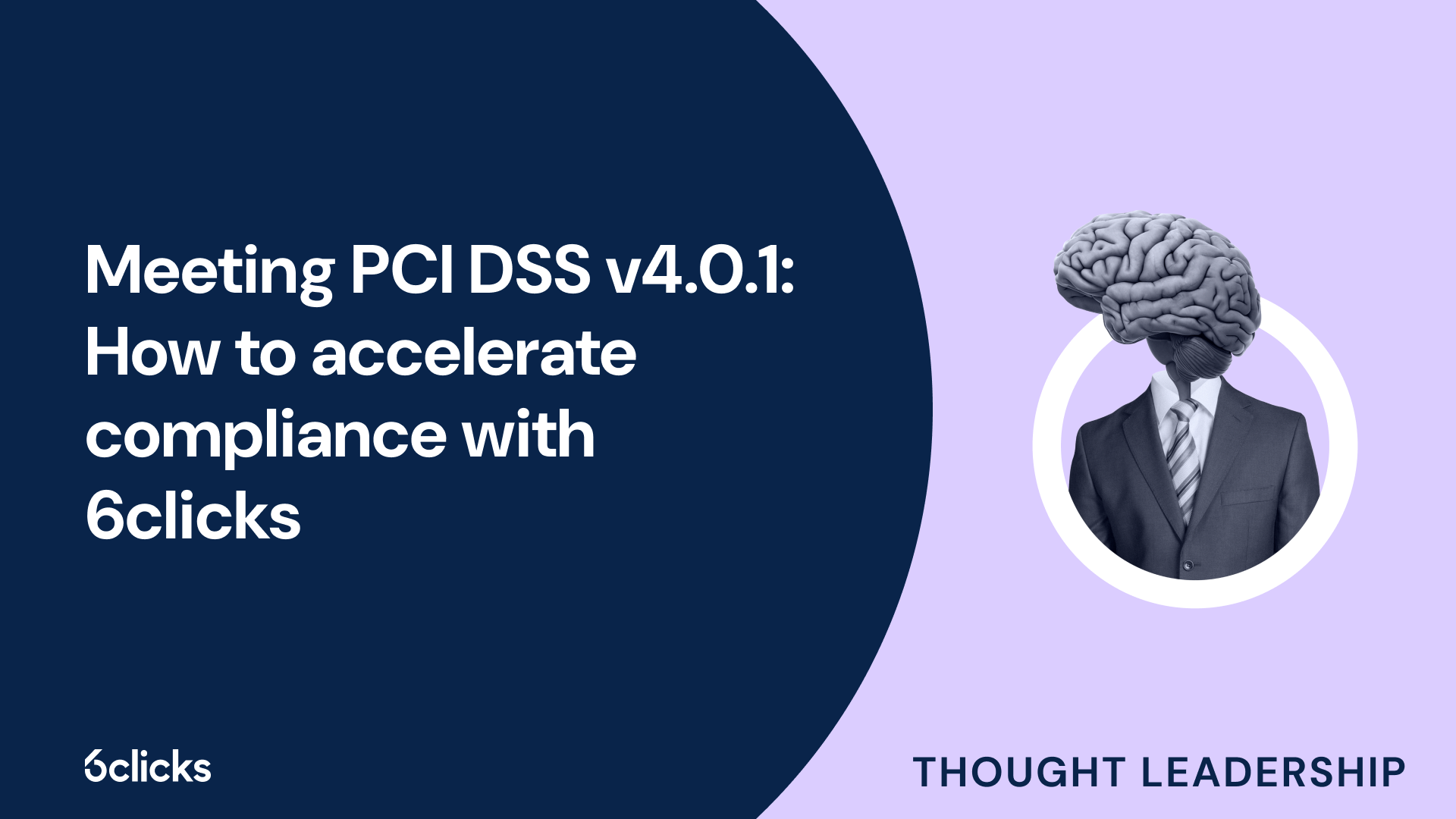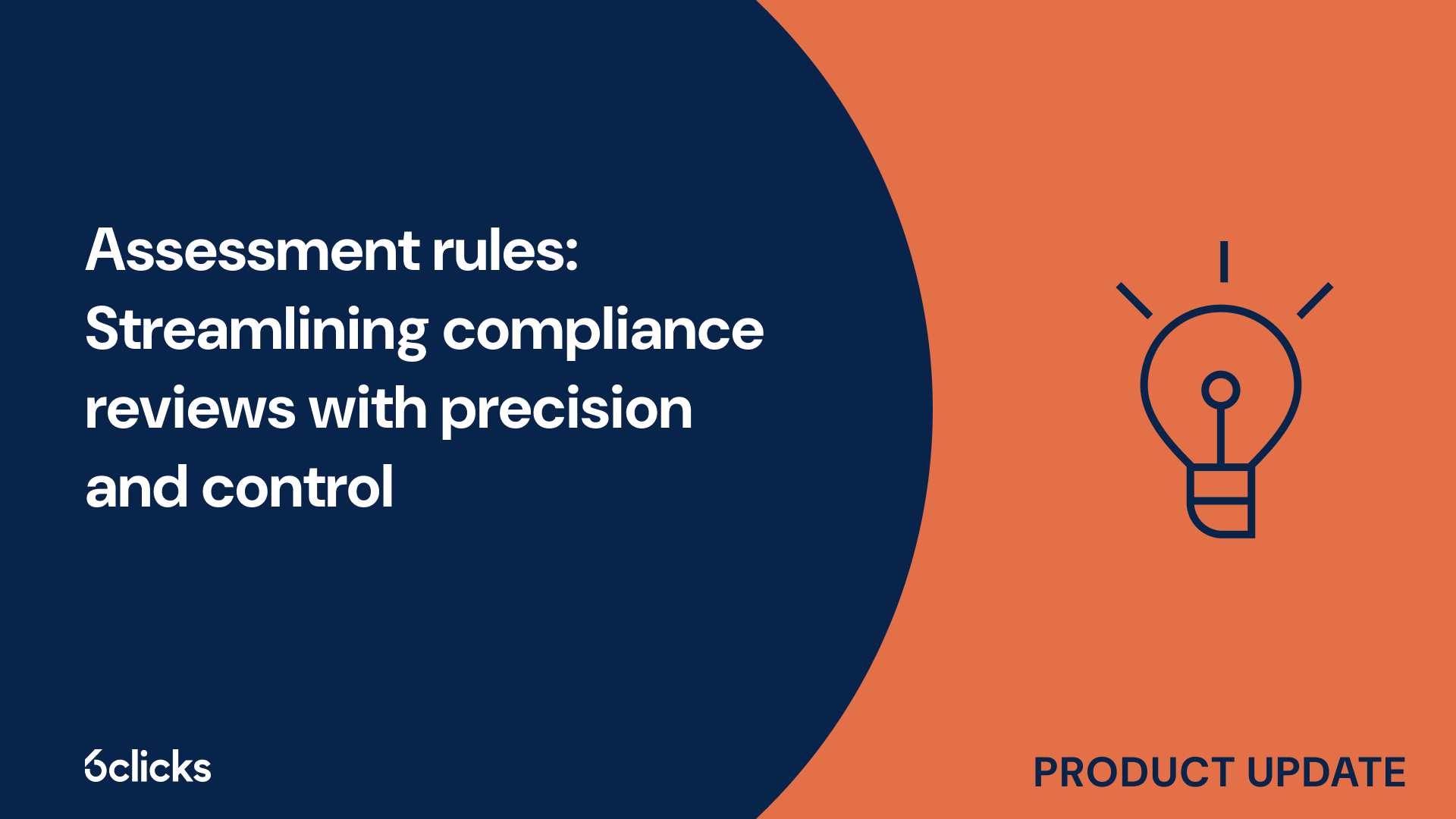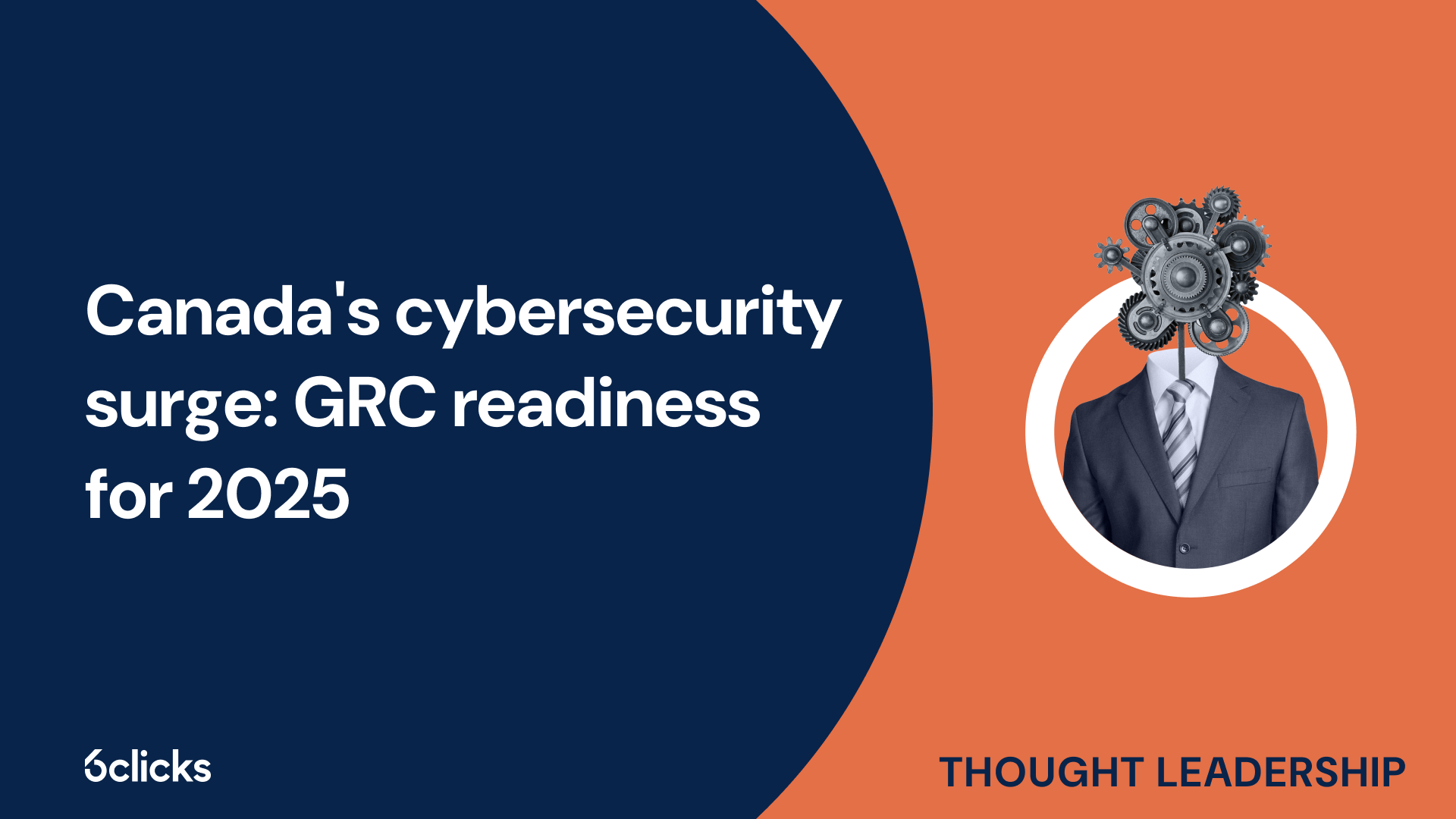Cyber resilience in 2025: Your smart guide to NIST CSF
Boost your organization's cyber resilience with this expert guide to the NIST Cybersecurity Framework. Learn to assess risk, improve security posture, and automate compliance with AI-powered tools.
-1.png?width=200&height=249&name=Group%20193%20(1)-1.png)
Cyber resilience in 2025: Your smart guide to NIST CSF
What is the NIST framework for incident response?
The NIST framework for incident response is a comprehensive process that organizations can follow to effectively detect, respond to, and recover from cybersecurity incidents. It is designed to minimize damage, mitigate risks, and ensure the timely recovery of normal operations after an incident occurs. The framework consists of five key steps that help organizations establish a structured and effective incident response capability. By following these steps, organizations can better protect critical assets, respond to incidents in a coordinated manner, and minimize the impact of future incidents. Let's dive into the details of each step in the NIST framework for incident response.
The benefits of using the NIST framework
The NIST (National Institute of Standards and Technology) framework for incident response provides several key benefits to organizations. Firstly, it offers a flexible approach to managing cybersecurity risks. The framework allows organizations to adapt and tailor their incident response plans based on their specific needs, including their industry, size, and level of risk tolerance. This flexibility ensures that the incident response process is efficient and effective, addressing the unique challenges that each organization may face.
Secondly, the NIST framework is cost-effective. By utilizing a standardized approach, organizations can identify and prioritize their critical assets, allowing them to allocate their resources efficiently. This helps in minimizing the potential impact of incidents and reducing the overall costs associated with cybersecurity breaches.
Furthermore, the NIST framework improves security awareness and best practices within an organization. By following the framework's guidelines and recommendations, organizations can enhance their understanding of cybersecurity risks and implement proactive measures to mitigate them. This promotes a culture of security within the company and empowers employees to take responsibility for their role in protecting the organization's assets.
Additionally, the NIST framework promotes a proactive approach to risk management. It helps organizations identify potential cybersecurity events before they occur, enabling them to take necessary steps to prevent or minimize the impact of future incidents. This proactive mindset allows organizations to stay ahead of emerging threats and respond effectively to any security incidents that may arise.
Lastly, the NIST framework enhances communication and collaboration between departments. It provides a common language and set of procedures that facilitate the exchange of information and coordination between different teams involved in incident response, such as IT, legal, and management. This collaboration ensures a timely and cohesive response, minimizing the impact of incidents and expediting the recovery process.
Step 1: preparation
The first step of the NIST framework for incident response is preparation. This step involves establishing the necessary measures and procedures to effectively respond to cybersecurity incidents. It emphasizes the importance of proactive planning and preparation to minimize the potential impact of incidents and enable a timely and effective response. Organizations need to identify and prioritize their critical assets, assess potential cybersecurity risks, and develop incident response plans that align with their risk tolerances and regulatory requirements. This step also includes the implementation of protective measures and technologies, such as firewalls and encryption, to safeguard sensitive assets. Furthermore, organizations should establish an incident response team consisting of individuals from various departments, including IT, legal, and management, to ensure a coordinated and efficient response to security incidents. Overall, the preparation step of the NIST framework lays the foundation for an effective incident response process by setting the stage for proactive risk management and establishing a well-prepared incident response team.
Develop an incident response plan
Developing an incident response plan is crucial for organizations to effectively respond to and mitigate cybersecurity incidents. Assimilating frameworks from recognized standards organizations such as NIST (National Institute of Standards and Technology), ISO (International Organization for Standardization), ISACA (Information Systems Audit and Control Association), and SANS (SysAdmin, Audit, Network, Security) can provide a comprehensive structure for incident response.
When selecting a framework, it is important to consider compliance obligations and industry-specific requirements. Organizations must ensure that the chosen framework aligns with regulatory requirements and industry standards to effectively manage cybersecurity risks. This includes considering the impact of incidents on normal operations, potential cybersecurity events, risk assessments, and the identification of critical assets.
A customized incident response plan should be built, taking into account the unique needs of the organization and integrating security into other business functions. This involves establishing an incident response team, implementing security policies and procedures, and conducting recovery activities to minimize the impact of incidents.
By following a framework and customizing the incident response plan, organizations are better prepared to handle cybersecurity events, mitigate risks, and meet regulatory obligations. This allows for effective incident response and facilitates timely recovery, ultimately minimizing the impact of incidents and preparing for future attacks.
Identify critical assets and potential cybersecurity events
Identifying critical assets and potential cybersecurity events are crucial steps in the NIST framework for incident response. By understanding the organization's critical assets and potential threats, security teams can develop effective incident response plans and prioritize their response activities.
The first step involves conducting a risk assessment to identify critical assets. This includes evaluating the organization's business environment, existing cybersecurity program, and risk tolerances. By understanding the value and importance of different assets, organizations can focus their resources on protecting these assets.
Next, organizations need to assess potential cybersecurity events. This involves identifying the range of threats and vulnerabilities that could impact the organization. By considering various attack vectors and potential attack scenarios, organizations can proactively develop protective measures.
Furthermore, organizations should establish incident response policies and procedures to effectively respond to potential cybersecurity incidents. This includes defining roles and responsibilities within the incident response team, establishing communication channels with internal and external stakeholders, and ensuring compliance with regulatory requirements and industry standards.
In addition to identifying critical assets and potential cybersecurity events, organizations need to continuously monitor and detect suspicious activity to promptly respond to incidents. This includes implementing asset management and monitoring software to detect unauthorized access and suspicious behaviors.
By properly identifying critical assets and potential cybersecurity events, organizations can develop an effective incident response process that mitigates risks and minimizes the impact of security incidents.
Establish regulatory requirements and industry standards
Establishing regulatory requirements and industry standards is a crucial step in the NIST framework for incident response. These standards ensure that organizations are compliant with legal obligations and best practices in cybersecurity. Here is how to establish regulatory requirements and industry standards for incident response:
- Identify Applicable Regulations and Standards: Begin by researching and identifying the specific regulatory requirements and industry standards that apply to your organization based on its sector, geographical location, and the type of data it handles. Common regulatory frameworks include GDPR, California's CCPA, and PCI DSS.
- Understand Compliance Requirements: Once the applicable regulations and standards are identified, thoroughly understand the requirements and obligations outlined in each of them. This includes understanding the timelines for breach notification, the level of protection required for sensitive data, and any specific incident response procedures mandated.
- Conduct Gap Analysis: Assess your organization's current incident response practices and procedures against the requirements and obligations outlined in the applicable regulations and industry standards. Identify any gaps or areas of non-compliance that need to be addressed.
- Develop Policies and Procedures: Based on the identified gaps, develop incident response policies and procedures that align with the regulatory requirements and industry standards. These policies should clearly outline the steps to be followed in the event of a breach, including breach detection, containment, assessment, notification, and recovery.
- Training and Documentation: Train your incident response staff on the established policies and procedures. Ensure that all relevant employees are aware of their roles and responsibilities in incident response. Document the incident response plan, including the regulatory requirements and industry standards it aligns with, and regularly update it to stay current with any changes in the regulations or standards.
By establishing regulatory requirements and industry standards in their incident response plans, organizations can ensure that they are in compliance with legal obligations, reduce the risk of penalties or legal action, and maintain customer trust.
Create a cross-functional security team
Creating a cross-functional security team is essential for an effective incident response plan. By assembling individuals from different areas of the company, organizations can maximize their resources, expertise, and perspectives in handling cybersecurity incidents. Including relevant areas such as corporate communications and human resources is crucial for a comprehensive and coordinated response.
Corporate communications plays a vital role in managing the organization's reputation during an incident. They can craft clear and consistent messaging to address internal and external stakeholders, ensuring transparency and trust. Additionally, they can help minimize the impact of incidents on the organization's brand and public image.
Human resources is important for incident response, as they can help coordinate employee communication and support. They can also assist with employee training, ensuring that all staff members are aware of their roles and responsibilities during an incident. Human resources can also assist in any legal or regulatory compliance matters related to cybersecurity incidents.
When creating a cross-functional security team, it is important to appoint key roles to ensure a comprehensive response. Some key roles that should be considered include:
- Incident Response Coordinator: This individual will oversee and manage the overall incident response process, ensuring that all necessary tasks are completed and coordinating with other team members.
- IT Security Specialist: This role will focus on technical aspects of incident response, such as analyzing and containing the incident, investigating the root cause, and implementing necessary security measures.
- Legal Counsel: Having legal expertise is crucial for understanding and complying with relevant laws, regulations, and contractual obligations during an incident. They can provide guidance on breach notification requirements and potential legal liabilities.
- Public Relations Representative: This role is responsible for managing external communication, including media relations, press releases, and social media updates. They can help protect the organization's reputation and maintain trust with stakeholders.
- Human Resources Liaison: This individual will work closely with the human resources department to ensure employee support and compliance with internal policies during an incident. They can also assist with any necessary internal investigations or disciplinary actions.
Appoint key roles to respond to incidents
Appointing key roles within the incident response team is essential for effectively responding to cybersecurity incidents. Each role brings unique expertise and responsibilities to ensure a comprehensive and coordinated response.
- Incident Response Coordinator: The incident response coordinator plays a crucial role in overseeing and managing the entire incident response process. They are responsible for ensuring that all necessary tasks are completed in a timely manner and coordinating with other team members. This role acts as the central point of contact, facilitating communication and decision-making throughout the incident response process.
- Technical Lead: The technical lead focuses on the technical aspects of incident response. They analyze the incident, contain its impact, investigate the root cause, and implement necessary security measures to prevent future incidents. This role requires a deep understanding of cybersecurity technologies, practices, and methodologies.
- Communication Lead: The communication lead manages external and internal communication during an incident. They are responsible for crafting clear and consistent messaging to stakeholders, including media, employees, customers, and partners. By effectively managing communication, this role helps protect the organization's reputation and maintains trust with key audiences.
- Legal Counsel: Legal counsel plays a critical role in understanding and complying with relevant laws, regulations, and contractual obligations during an incident. They provide guidance on breach notification requirements, potential legal liabilities, and help navigate any legal or regulatory compliance matters that may arise.
By appointing these key roles, organizations can ensure a systematic and coordinated approach to incident response. Each role brings specialized knowledge and skills that contribute to the overall effectiveness of the incident response process.
Step 2: detection & analysis
In the NIST framework for incident response, the second step is detection and analysis. This step focuses on identifying and understanding cybersecurity events or incidents that may impact the organization's normal operations. It involves continuously monitoring and collecting data from various sources, including security systems, network logs, and user activity. The goal is to identify any suspicious or unauthorized activity that could indicate a potential cybersecurity incident. Once identified, the incident response team analyzes the collected data to determine the nature and scope of the incident, assess the potential impact, and understand the underlying cause. This step is crucial in providing the necessary information for effective incident response planning and ensuring timely detection and containment of cybersecurity incidents. It helps organizations proactively address cybersecurity risks and protect their critical assets.
Establish an incident monitoring system
Establishing an incident monitoring system is a critical aspect of effective cybersecurity management. By implementing a comprehensive vulnerability management program and/or a targeted managed detection and response program, organizations can enhance their ability to detect, respond to, and mitigate cybersecurity incidents.
A vulnerability management program involves regularly identifying and addressing vulnerabilities in an organization's systems and software assets. This includes performing regular scans to identify potential weaknesses, prioritizing vulnerabilities based on risk analysis, and applying patches and updates in a timely manner. By proactively addressing vulnerabilities, organizations can significantly reduce the likelihood of successful cyber attacks.
Additionally, a managed detection and response program involves leveraging advanced technologies and expert resources to continuously monitor an organization's IT environment for potential cybersecurity events. This includes real-time threat intelligence, behavioral analytics, and automated incident response capabilities. By proactively monitoring for suspicious activity and promptly investigating and responding to incidents, organizations can minimize the impact of incidents and facilitate a swift recovery.
Implementing these programs can help organizations lower the volume and severity of incidents. By proactively managing vulnerabilities and continuously monitoring for potential threats, organizations are better equipped to prevent incidents from escalating into major incidents that disrupt normal operations or result in significant financial or reputational damage.
While the NIST framework for incident response is one widely recognized approach to incident management, there are also alternative cross-industry frameworks available. Institutions such as IEEE, the Internet Engineering Task Force, and the European Union Agency for Cybersecurity have developed their own incident response frameworks that cater to the specific needs of different industries and regions.
Collect evidence of suspicious activity or unauthorized access
Collecting evidence of suspicious activity or unauthorized access is a critical step in the NIST framework for incident response. It involves thorough analysis of logs, conducting real-time memory inspections, and reviewing network devices, operating systems, and cloud services for any anomalous or suspicious activity.
Analyzing logs is essential for identifying any abnormalities or signs of unauthorized access. Logs contain valuable information about user activities, system events, and network traffic, which can help investigators piece together the sequence of events leading up to a security incident. By carefully examining logs, security teams can identify any unauthorized access attempts, suspicious behavior, or unusual patterns that may indicate a potential security breach.
Real-time memory inspections are another method used to gather evidence of suspicious activity. Memory inspections involve examining the current state of a system's memory to identify any malicious processes, unauthorized changes, or signs of compromise. This can provide valuable insights into the actions of an attacker and help in determining the scope and impact of a security incident.
In addition to analyzing logs and conducting memory inspections, it is essential to review network devices, operating systems, and cloud services for any signs of anomalous or suspicious activity. This involves monitoring network traffic, reviewing system logs and configurations, and analyzing the behavior of cloud services. Any unusual activity or behavior that deviates from normal operations can indicate a potential security incident.
To aid in the detection of alterations and potential security incidents, file integrity checking software and anti-malware programs play a crucial role. File integrity checking software monitors and verifies the integrity of important system files and configurations, alerting security teams if any unauthorized modifications are detected. Anti-malware programs, on the other hand, scan for and detect known malicious software or malware, ensuring that systems are protected against potential threats.
By diligently collecting evidence of suspicious activity or unauthorized access through log analysis, real-time memory inspections, and the use of file integrity checking software and anti-malware programs, organizations can gather crucial evidence to understand the nature of a security incident, identify the scope of the breach, and take appropriate actions to mitigate the impact of the incident.
Analyze security logs and other data sources for indicators of compromise (IOC)
Analyzing security logs and other data sources for indicators of compromise (IOC) is a critical step in the incident response process. This step involves reviewing logs and data from various sources such as network devices, operating systems, and cloud services to identify any suspicious or abnormal activities that may indicate a potential cybersecurity threat.
By carefully examining these logs and data, security teams can detect unauthorized access attempts, unusual patterns of behavior, or any indicators that may suggest a compromise has occurred. These indicators of compromise can include signs of malicious activity, such as unauthorized changes to system configurations, unusual network traffic, or the presence of known malware.
Identifying these indicators of compromise is crucial for the containment and eradication of malicious activity. It allows security teams to take immediate action to isolate affected systems, remove any malware or unauthorized software, and restore systems to a secure state. Analyzing security logs and data sources also helps in determining the scope and impact of the incident, which is vital for effective incident response.
Step 3: containment, eradication, & recovery
Once security teams have identified the indicators of compromise and determined the scope and impact of the incident, the next step in the NIST framework for incident response is containment, eradication, and recovery. Containment involves isolating affected systems and preventing further spread of the incident. This can be achieved by disconnecting compromised devices from the network or implementing network segmentation to limit the potential damage. Eradication focuses on removing the cause of the incident, such as malware or unauthorized software. This may involve restoring affected systems from backups, patching vulnerabilities, or removing malicious code. Recovery activities aim to restore normal operations and ensure that systems are secure. This may include rebuilding or reconfiguring systems, implementing additional security measures, and updating security policies and procedures. The ultimate goal of this step is to minimize the impact of the incident, restore systems to a secure state, and prevent future incidents from occurring.
Isolate the affected network segment or devices
Isolating the affected network segment or devices is a critical step in the incident response process. It involves separating the compromised network segment or devices from the rest of the network to prevent further spread of the incident and minimize the impact on normal operations.
The first step in isolating the affected network segment or devices is to disconnect them from the network. This helps to contain the incident and prevent any communication with other devices or systems. By physically disconnecting the affected devices or segment, the potential for the incident to spread is significantly reduced.
Another important step is to implement network segmentation. This involves dividing the network into smaller, isolated segments or virtual LANs (VLANs). By segmenting the network, the impact of a potential incident can be localized, making it easier to contain and mitigate. In the event of an incident, network segmentation allows security teams to limit the exposure of critical assets and other segments to the affected area.
Additionally, it is crucial to disable compromised accounts or devices to prevent unauthorized access and further spread of the incident. This may include disabling user accounts, removing compromised devices from the network, or changing access credentials. By taking these steps, the organization can minimize the risk of the incident spreading to other parts of the network or causing additional damage.
Implement countermeasures to block malicious activity
Implementing countermeasures to block malicious activity is a crucial step in incident response. Promptly blocking malicious activity is essential to prevent further damage and potential future attacks. There are specific countermeasures that can be taken to effectively block and eradicate malware or unauthorized access.
The first countermeasure is to isolate affected network segments or devices. By disconnecting them from the network, the incident can be contained, preventing any communication with other devices or systems. This minimizes the potential spread of the incident to other parts of the network.
Another countermeasure is to apply appropriate security patches. Keeping software and systems up to date with the latest patches and updates helps mitigate vulnerabilities that can be exploited by attackers. Patch management ensures that known security weaknesses are addressed, reducing the risk of malicious activity.
Implementing strong access controls is also essential. This includes disabling compromised accounts or devices to prevent unauthorized access and further spread of the incident. By removing or blocking access to compromised entities, the organization can limit the impact of the incident and reduce the chances of recurring attacks.
Regularly monitoring and analyzing network and system logs is another countermeasure. Suspicious activity can be detected and blocked in real-time, preventing potential cybersecurity incidents. Analyzing logs provides valuable insights into the nature of the incident and helps organizations take immediate actions to block malicious activity.
Lastly, implementing intrusion prevention systems (IPS) and firewalls can effectively block malicious traffic. IPS inspects network traffic and can automatically block or prevent potentially harmful activity. Firewalls act as a barrier between the internal network and external threats, filtering and blocking malicious data packets.
By implementing these countermeasures, organizations can successfully block and mitigate malicious activity, reducing the impact of incidents and protecting critical assets from future attacks.







